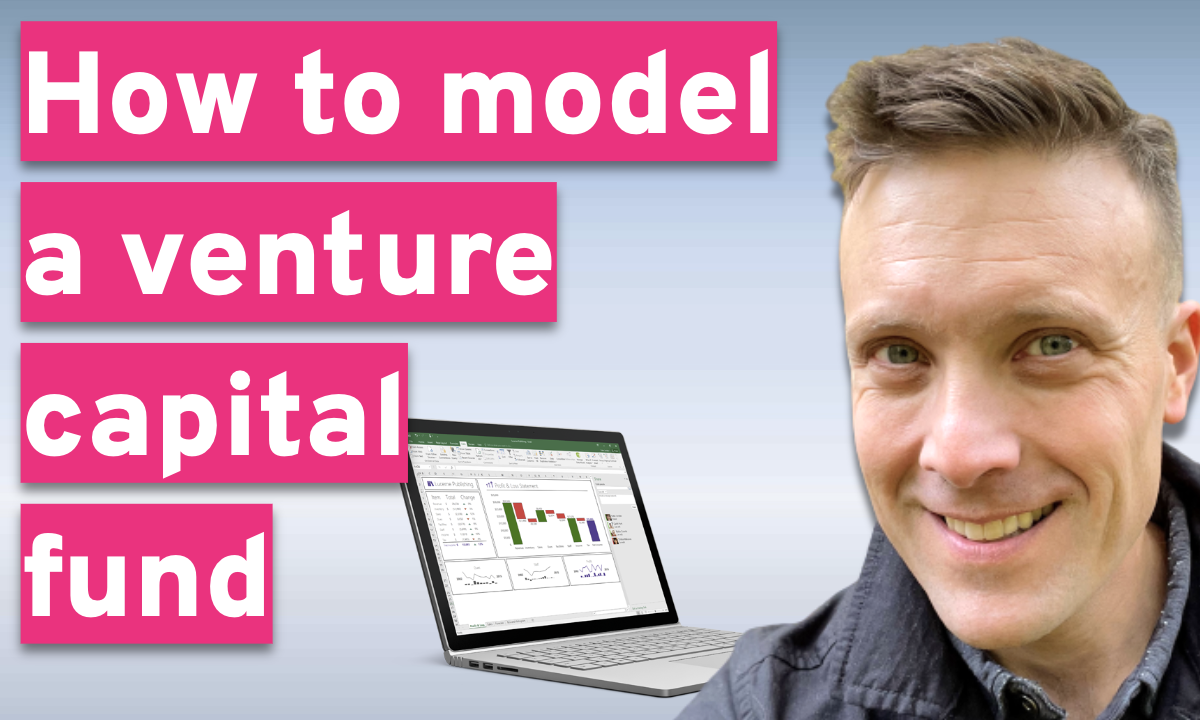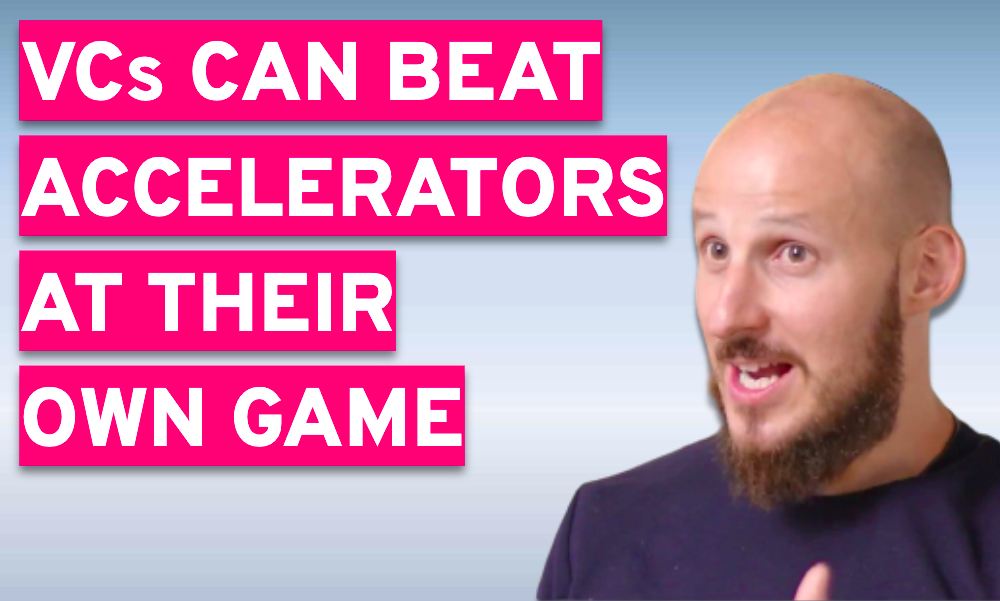It’s no newsflash that startup founders need all the help they can get. This is not only paramount during the early stages of fundraising but even later on. For many decades, the bigger offering from VC firms has been financial support. Retrospectively, it doesn’t come as a surprise that 1 in 10 startups across all industries fail. If, as an investor, you wish to move away from such statistics and help your portfolio thrive, it’s time to make the switch from a funding source to a true venture supporter.
From my experience as an entrepreneur for the last 22+ years and mainly by supporting multiple ventures through Vesquad, I know that founding teams often spend close to half of their working hours handling tasks that are not directly related to their core value proposition. We believe that entrepreneurs should be focusing on their secret sauce and on building their strong competitive advantage instead of wasting their resources on activities that are not directly connected with their immediate success.
This is one of the many reasons why some of the biggest operational VC firms support their investments. For example, Andreessen Horowitz (“a16z”), has hundreds of people entirely dedicated to helping their 300+ portfolio companies. By providing the necessary resources and hands-on support on such tasks, the performance of both the startups and the funds are significantly increased. This is the whole point of the operational model.
The benefits, however, continue. I remember the days when startup founders would go door to door looking for funding. There was an abundance of ideas but a limited pool of VC firms so the chances of having a potential unicorn among the rest of the portfolio companies was high. Nowadays, the pool of VC firms is much larger and the competition much fiercer. This means that the funds are now on the lookout for promising startups and founders. The result of this shift is that founders are on the lookout for the best offer. Now the best offer is not the one with the most digits but the offer that combines financial support, resources, mentoring, and hands-on support. If you want to stand out from the crowd then this is the magic recipe for success.
We support investment funds to become operational VCs in 3 main areas:
- Build. On top of their existing infrastructure, we create the necessary layer of strategies, processes, tools, and governance that will enable them to provide operational support to multiple startups in a scalable and cost-efficient manner.
- Grow. We support the MDs and 4-5 key people that are running the show, by increasing their capacity and delivering upon their day to day needs.
- Succeed. We deliver hands-on support to their portfolio companies in areas around business, product, and team while measuring the actual performance and overall ROI.
Our framework works wonders for both new deals and follow-ons in portfolio companies, despite the stage of the fund. For example, we are currently working as part of an EU-funded project in Libya that involves a leading financial institution in the country and Tadawul Group. This early-stage VC fund will allow promising Libyan startups to access venture capital funding for the first time ever without incurring debt on their balance sheets that have to be repaid regularly.
Vesquad is responsible for setting up the structure and providing end-to-end support that will enable the fund to become an operational VC. Besides the operational capability, our team will be serving the entrepreneurs in a very direct and agile way.
Adopting an operational model can give startups of all sizes a significant competitive advantage. Hands-on support can be equally significant to an early-stage startup that needs help getting off the ground as to a startup with significant growth that needs help making a successful exit. By focusing on the most pressing matter the founding team faces at any given time, you’re increasing the chances of raising a unicorn. Does building such processes seem like a daunting task? That’s because it is. But the good news is there are both internal and external frameworks that can help you make the switch.
Setting strong foundations and processes
To start adding true value to your investments, you need to first redefine the core of your fund, set up processes that will increase the productivity of your team, and implement an effective strategy. At Vesquad, we guide, train, and deliver to VC firms the necessary support that their ventures require. One of the frameworks we’ve developed is the Venture Support Model, a leading strategic management tool that presents a comprehensive 360-degree view of a VC's primary components in the shape of a pyramid. It’s a compact way to describe how a VC fund intends to support its portfolio companies and create revenue.
This visual representation does not only define which areas are crucial for the success of the fund but it also indicates the order in which each component needs to be defined and how they are related to one another. What makes the Venture Support Model such a valuable tool is that by showing all the different components as part of a bigger whole, the relationship and dynamic between them become evident. By altering one of them, the effect on the other components is inevitable and immediately depicted.
The components of the Venture Support Model
At the top of the pyramid, you’ll find the vision and mission. In other words, what you wish to accomplish and how you plan to do it. This needs to be stated before anything else. Once these are in place, you need to define a clear and effective strategy. Ideally this should be dynamic so that you can adjust it according to your fund's needs. There are other frameworks that can help you do just that and are mentioned later on.
As you move towards the middle tier of the pyramid, you’ll need to consider your segments and your competitive advantage. Who are you targeting and why they should choose you? We’ve got a hint: whether you’re looking to attract entrepreneurs or limited partners, the operational model is the way to go.
The most compact tier of the Pyramid is related more to your investments. There we have the focus area you wish to invest in. The team, both internal and external, that will help you get there. The structure you’ll set in place to support your startups in the best possible way. And the component that holds all these together: the costs. Even though your key priorities are to raise capital and form a profitable portfolio of startups, you’re still running a business with expenses. Identifying and listing your costs helps avoid redundant expenses.
We saved the best for last, not because it’s the least important component but because it’s the base upon which everything else can be built. It’s no other than the all-time favorite KPIs. Fund size, number of investments, minimum ticket size, and IRR are only a few of the goals to set early on.
The Venture Support Funnel
Another crucial framework that can help you increase your operational capacity is related to the strategy that you will follow in terms of your audience and the scalability of your fund.
It’s a competitive world out there for VC firms. You need a solid strategy to stand out. Such a framework can help you define who you should target through all of your activities and more specifically how broad or how narrow your targeted audience should be. Specifying the audience early on and revisiting it regularly is one of the components that will help the VC Fund form an effective strategy and bring the best possible results.
The second component of a successful strategy that you should take into account is related to scalability. If the audience defines who you’ll target, scalability defines how and to what extent, depending on whether you wish to provide custom solutions tailored to the needs of each startup or support as many startups as possible. This is for you to decide based on your available resources.
At Vesquad, one of the ways we can bring value to a VC is to design and deliver upon their funnel. Specifically, we have seen value in splitting the funnel into these 5 main stages:
- Sourcing new opportunities. What are the main channels they can tap into and source new opportunities? What are the main categories of relevant stakeholders they can incentivize and or partner with? What is the relevant content that needs to be in place? What are the various actions they need to take?
- Evaluating opportunities/startups. We support our customers in setting up structured and efficient ways to evaluate the maturity level of every opportunity and provide them with the relevant tools and data sources that can help them make their decision.
- Incubating founders. This step is optional and is implemented only when the strategy and overall objectives of the VC include this provision.
- Invest in a new venture and initiate the venture building and venture support process. At this stage, the VC has taken the decision to invest in a new startup and with our support, they can put in place the basic elements in regards to monitoring the progress of the venture, evaluating the maturity level and overall needs of the startup, as well as establishing efficient working modalities.
- Provide the necessary support on an ongoing basis to the portfolio companies.
Our funnel and the two frameworks are an example of some of the changes that need to be made internally if a VC wishes to start moving towards an operational model. There are also frameworks related to the external activities of the fund that can help them build processes from identifying and sourcing new opportunities to providing venture building support. By filtering and prioritizing the areas that each startup needs support from, start to exit, they are maximizing their chances of success. The result? The fund’s ROI.
It's a marathon, not a sprint
Combining all the frameworks brings a VC one step closer to the new age of venture support and a more promising portfolio of companies. However, throughout the fund’s lifecycle, they will need to address different pressing matters so it’s crucial to know how to identify and prioritize them. This process can be significantly time-consuming without the right tools and without a knowledgeable partner who will be by their side every step of the way.
However, besides the internal frameworks and processes, the needs and goals of the fund’s investments shift as well as they grow, regardless of the industry they’re in. Even if their resources increase as they scale up, there are still tasks that take the focus from other more important areas. To lead them to a successful exit and keep the ROI high, a fund needs to be able to provide them hands-on support during all the different stages.
Whether you’re an established VC firm or you’re only just starting building your portfolio of companies, the operational model is the way to go. Founders are seeking added value so you need to be prepared to offer it.
About the author
Antonis Argyros is Managing Director of Vesquad, where he supports VC firms with hands-on support across Europe, MENA and Japan.
You can contact Antonis at [email protected].








